Field Experiments on a Square-Hole-Type Metamaterial: Exploring the Attenuation of Rayleigh and Love Waves
Abstract
1. Introduction
2. Theoretical Background
2.1. Elastic Wave Propagation Equation
2.2. Numerical Simulation
3. Experimental Procedure
3.1. Set-Up
3.2. Data Processing
3.3. Energy Attenuation of Surface Waves
3.4. Attenuation of Rayleigh and Love Waves
4. Conclusions
Author Contributions
Funding
Data Availability Statement
Acknowledgments
Conflicts of Interest
References
- di Marzo, M.; Tomassi, A.; Placidi, L. A Methodology for Structural Damage Detection Adding Masses. Res. Nondestruct. Eval. 2024, 35, 172. [Google Scholar] [CrossRef]
- Brûlé, S.; Javelaud, E.H.; Enoch, S.; Guenneau, S. Experiments on Seismic Metamaterials: Molding Surface Waves. Phys. Rev. Lett. 2014, 112, 113901. [Google Scholar] [CrossRef] [PubMed]
- Miniaci, M.; Krushynska, A.; Bosia, F.; Pugno, N.M. Large scale mechanical metamaterials as seismic shields. N. J. Phys. 2016, 18, 083041. [Google Scholar] [CrossRef]
- Brûlé, S.; Enoch, S.; Guenneau, S. Emergence of seismic metamaterials: Current state and future perspectives. Phys. Lett. A 2020, 384, 126034. [Google Scholar] [CrossRef]
- Liu, Z.; Zhang, X.; Mao, Y.; Zhu, Y.Y.; Yang, Z.; Chan, C.T.; Sheng, P. Locally Resonant Sonic Materials. Science 2000, 289, 1734. [Google Scholar] [CrossRef] [PubMed]
- Mu, D.; Shu, H.; Zhao, L.; An, S. A Review of Research on Seismic Metamaterials. Adv. Eng. Mater. 2020, 22, 1901148. [Google Scholar] [CrossRef]
- Zhang, X.; Zheng, N.; Ji, C.; Lu, Y.; Shi, Q. Attenuation of seismic waves using resonant metasurfaces: A field study on an array of rubber oscillators. Mater. Today Commun. 2024, 41, 110659. [Google Scholar] [CrossRef]
- Zeng, Y.; Zhang, S.-Y.; Zhou, H.-T.; Wang, Y.-F.; Cao, L.; Zhu, Y.; Du, Q.-J.; Assouar, B.; Wang, Y.-S. Broadband inverted T-shaped seismic metamaterial. Mater. Des. 2021, 208, 109906. [Google Scholar] [CrossRef]
- Pu, X.; Palermo, A.; Cheng, Z.; Shi, Z.; Marzani, A. Seismic metasurfaces on porous layered media: Surface resonators and fluid-solid interaction effects on the propagation of Rayleigh waves. Int. J. Eng. Sci. 2020, 154, 103347. [Google Scholar] [CrossRef]
- Zeighami, F.; Sandoval, L.; Guadagnini, A.; Di Federico, V. Uncertainty quantification and global sensitivity analysis of seismic Metabarriers. Eng. Struct. 2023, 277, 115415. [Google Scholar] [CrossRef]
- Colombi, A.; Craster, R.V.; Colquitt, D.; Achaoui, Y.; Guenneau, S.; Roux, P.; Rupin, M. Elastic Wave Control Beyond Band Gaps: Shaping the Flow of Waves in Plates and Half-Spaces with Subwavelength Resonant Rods. Front. Mech. Eng. 2017, 3, 1. [Google Scholar] [CrossRef]
- Lou, J.; Fang, X.; Du, J.; Wu, H. Propagation of fundamental and third harmonics along a nonlinear seismic metasurface. Int. J. Mech. Sci. 2022, 221, 107189. [Google Scholar] [CrossRef]
- Colombi, A.; Colquitt, D.; Roux, P.; Guenneau, S.; Craster, R.V. A seismic metamaterial: The resonant metawedge. Sci. Rep. 2016, 6, 27717. [Google Scholar] [CrossRef] [PubMed]
- Colquitt, D.; Colombi, A.; Craster, R.; Roux, P.; Guenneau, S. Seismic metasurfaces: Sub-wavelength resonators and Rayleigh wave interaction. J. Mech. Phys. Solids 2017, 99, 379. [Google Scholar] [CrossRef]
- Zeng, Y.; Xu, Y.; Yang, H.; Muzamil, M.; Xu, R.; Deng, K.; Peng, P.; Du, Q. A Matryoshka-like seismic metamaterial with wide band-gap Characteristics. Int. J. Solids Struct. 2020, 185–186, 334. [Google Scholar] [CrossRef]
- Zeng, C.; Zhao, C.; Zeighami, F. Seismic surface wave attenuation by resonant metasurfaces on stratified soil. Earthq. Eng. Struct. Dyn. 2022, 51, 1201. [Google Scholar] [CrossRef]
- Lou, J.; Fang, X.; Fan, H.; Du, J. A nonlinear seismic metamaterial lying on layered soils. Eng. Struct. 2022, 272, 115032. [Google Scholar] [CrossRef]
- Fang, X.; Lou, J.; Chen, Y.M.; Wang, J.; Xu, M.; Chuang, K.-C. Broadband Rayleigh wave attenuation utilizing an inertant seismic metamaterial. Int. J. Mech. Sci. 2023, 247, 108182. [Google Scholar] [CrossRef]
- Cai, R.; Jin, Y.; Rabczuk, T.; Zhuang, X.; Djafari-Rouhani, B. Propagation and attenuation of Rayleigh and pseudo surface waves in viscoelastic metamaterials. J. Appl. Phys. 2021, 129, 124903. [Google Scholar] [CrossRef]
- Palermo, A.; Krödel, S.; Marzani, A.; Daraio, C. Engineered metabarrier as shield from seismic surface waves. Sci. Rep. 2016, 6, 39356. [Google Scholar] [CrossRef] [PubMed]
- Zaccherini, R.; Palermo, A.; Marzani, A.; Colombi, A.; Dertimanis, V.; Chatzi, E. Mitigation of Rayleigh-like waves in granular media via multi-layer resonant metabarriers. Appl. Phys. Lett. 2020, 117, 254103. [Google Scholar] [CrossRef]
- Zaccherini, R.; Colombi, A.; Palermo, A.; Dertimanis, V.K.; Marzani, A.; Thomsen, H.R.; Stojadinovic, B.; Chatzi, E.N. Locally Resonant Metasurfaces for Shear Waves in Granular Media. Phys. Rev. Appl. 2020, 13, 034055. [Google Scholar] [CrossRef]
- Palermo, A.; Krödel, S.; Matlack, K.H.; Zaccherini, R.; Dertimanis, V.K.; Chatzi, E.N.; Marzani, A.; Daraio, C. Hybridization of Guided Surface Acoustic Modes in Unconsolidated Granular Media by a Resonant Metasurface. Phys. Rev. Appl. 2018, 9, 054026. [Google Scholar] [CrossRef]
- Ma, M.; Jiang, B.; Gao, J.; Liu, W. Experimental study on attenuation zone of soil-periodic piles system. Soil Dyn. Earthq. Eng. 2019, 126, 105738. [Google Scholar] [CrossRef]
- Kacin, S.; Ozturk, M.; Sevim, U.K.; Mert, B.A.; Ozer, Z.; Akgol, O.; Unal, E.; Karaaslan, M. Seismic metamaterials for low-frequency mechanical wave Attenuation. Nat. Hazards 2021, 107, 213. [Google Scholar] [CrossRef]
- Cai, C.; Gao, L.; He, X.; Zou, Y.; Yu, K.; Wu, D. The surface wave attenuation zone of periodic composite in-filled trenches and its isolation performance in train-induced ground vibration isolation. Comput. Geotech. 2021, 139, 104421. [Google Scholar] [CrossRef]
- Achaoui, Y.; Antonakakis, T.; Brûlé, S.; Craster, R.V.; Enoch, S.; Guenneau, S. Clamped seismic metamaterials: Ultra-low frequency stop bands. N. J. Phys. 2017, 19, 063022. [Google Scholar] [CrossRef]
- Pu, X.; Shi, Z. A novel method for identifying surface waves in periodic structures. Soil Dyn. Earthq. Eng. 2017, 98, 67. [Google Scholar] [CrossRef]
- Palermo, A.; Vitali, M.; Marzani, A. Metabarriers with multi-mass locally resonating units for broad band Rayleigh waves attenuation. Soil Dyn. Earthq. Eng. 2018, 113, 265. [Google Scholar] [CrossRef]
- Achaoui, Y.; Ungureanu, B.; Enoch, S.; Brûlé, S.; Guenneau, S. Seismic waves damping with arrays of inertial resonators. Extrem. Mech. Lett. 2016, 8, 30. [Google Scholar] [CrossRef]
- Wang, X.; Wan, S.; Nian, Y.; Zhou, P.; Zhu, Y. Periodic in-filled pipes embedded in semi-infinite space as seismic metamaterials for filtering ultra-low-frequency surface waves. Constr. Build. Mater. 2021, 313, 125498. [Google Scholar] [CrossRef]
- Zhao, C.; Zeng, C.; Wang, Y.; Bai, W.; Dai, J. Theoretical and Numerical Study on the Pile Barrier in Attenuating Seismic Surface Waves. Buildings 2022, 12, 1488. [Google Scholar] [CrossRef]
- Chen, H.-Y.; Qin, Z.-H.; Liang, S.-N.; Li, X.; Yu, S.-Y.; Chen, Y.-F. Gradient-index surface acoustic metamaterial for steering omnidirectional ultra-broadband seismic waves. Extrem. Mech. Lett. 2023, 58, 101949. [Google Scholar] [CrossRef]
- Li, T.; Su, Q.; Kaewunruen, S. Seismic metamaterial barriers for ground vibration mitigation in railways considering the train-track-soil dynamic interactions. Constr. Build. Mater. 2020, 260, 119936. [Google Scholar] [CrossRef]
- Muhammad; Lim, C.; Żur, K.K. Wide Rayleigh waves bandgap engineered metabarriers for ground born vibration attenuation. Eng. Struct. 2021, 246, 113019. [Google Scholar] [CrossRef]
- Zeng, Y.; Peng, P.; Du, Q.-J.; Wang, Y.-S.; Assouar, B. Subwavelength seismic metamaterial with an ultra-low frequency bandgap. J. Appl. Phys. 2020, 128, 014901. [Google Scholar] [CrossRef]
- Zeng, Y.; Xu, Y.; Deng, K.; Peng, P.; Yang, H.; Muzamil, M.; Du, Q. A broadband seismic metamaterial plate with simple structure and easy realization. J. Appl. Phys. 2019, 125, 224901. [Google Scholar] [CrossRef]
- Maheshwari, H.K.; Rajagopal, P. Novel locally resonant and widely scalable seismic metamaterials for broadband mitigation of disturbances in the very low frequency range of 0–33 Hz. Soil Dyn. Earthq. Eng. 2022, 161, 107409. [Google Scholar] [CrossRef]
- Yu, W.; Zhou, L. Seismic metamaterial surface for broadband Rayleigh waves attenuation. Mater. Des. 2023, 225, 111509. [Google Scholar] [CrossRef]
- Pu, X.; Palermo, A.; Marzani, A. Lamb’s problem for a half-space coupled to a generic distribution of oscillators at the surface. Int. J. Eng. Sci. 2021, 168, 103547. [Google Scholar] [CrossRef]
- Du, Q.; Zeng, Y.; Huang, G.; Yang, H. Elastic metamaterial-based seismic shield for both Lamb and surface waves. AIP Adv. 2017, 7, 075015. [Google Scholar] [CrossRef]
- Guo, D.-K.; Chen, T. Seismic metamaterials for energy attenuation of shear horizontal waves in transversely isotropic media. Mater. Today Commun. 2021, 28, 102526. [Google Scholar] [CrossRef]
- Zhang, K.; Luo, J.; Hong, F.; Deng, Z. Seismic metamaterials with cross-like and square steel sections for low-frequency wide band gaps. Eng. Struct. 2021, 232, 111870. [Google Scholar] [CrossRef]

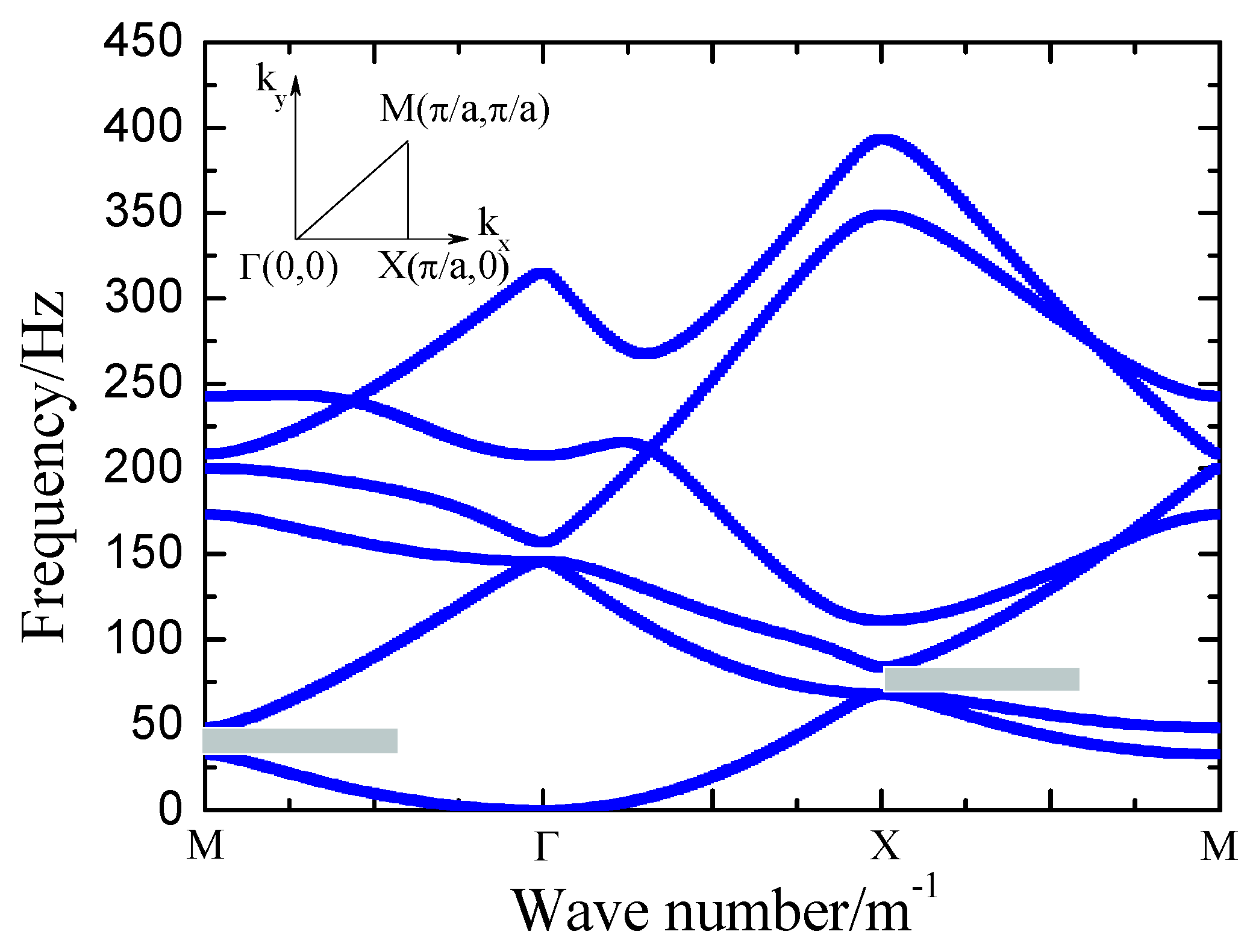

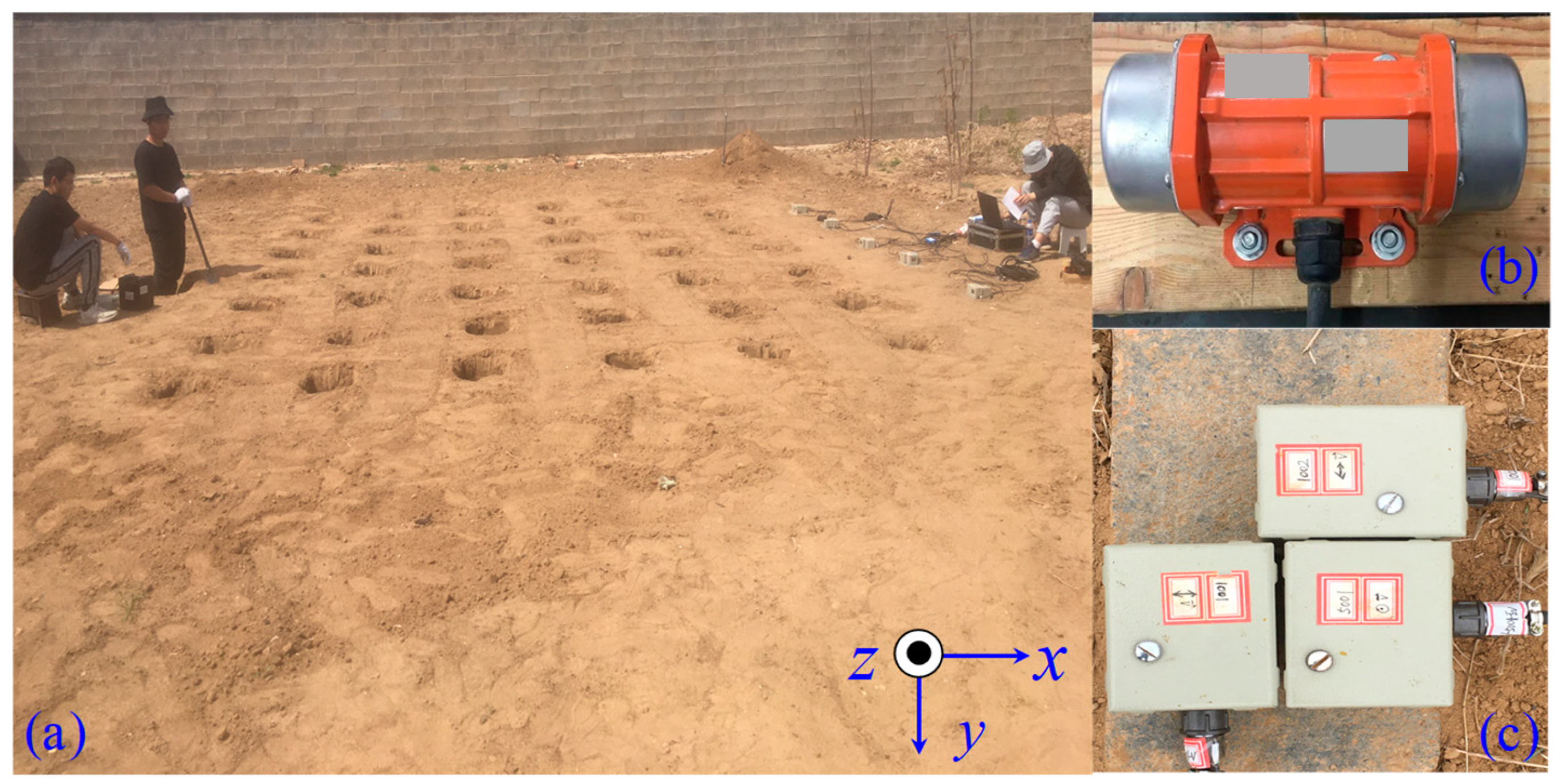
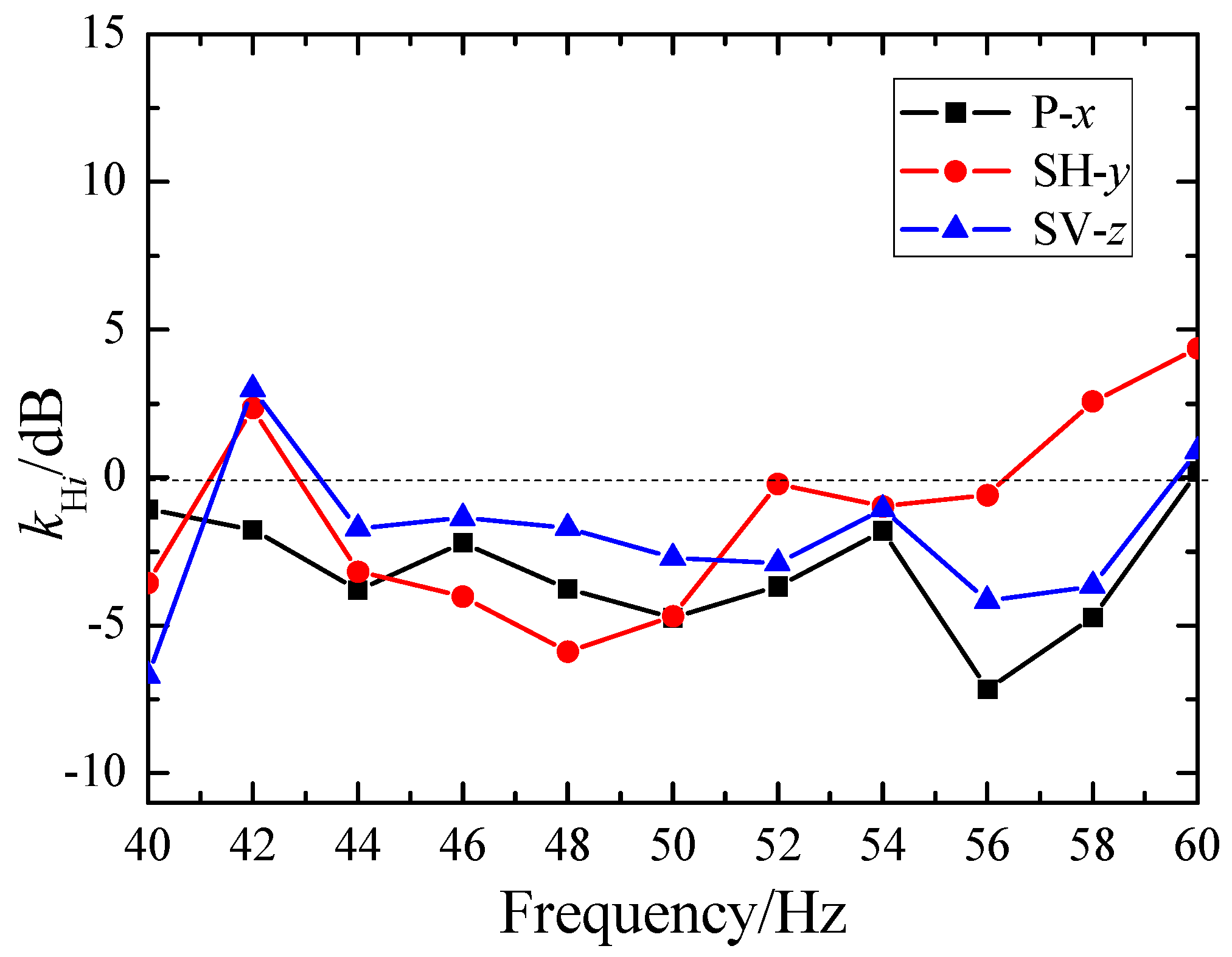
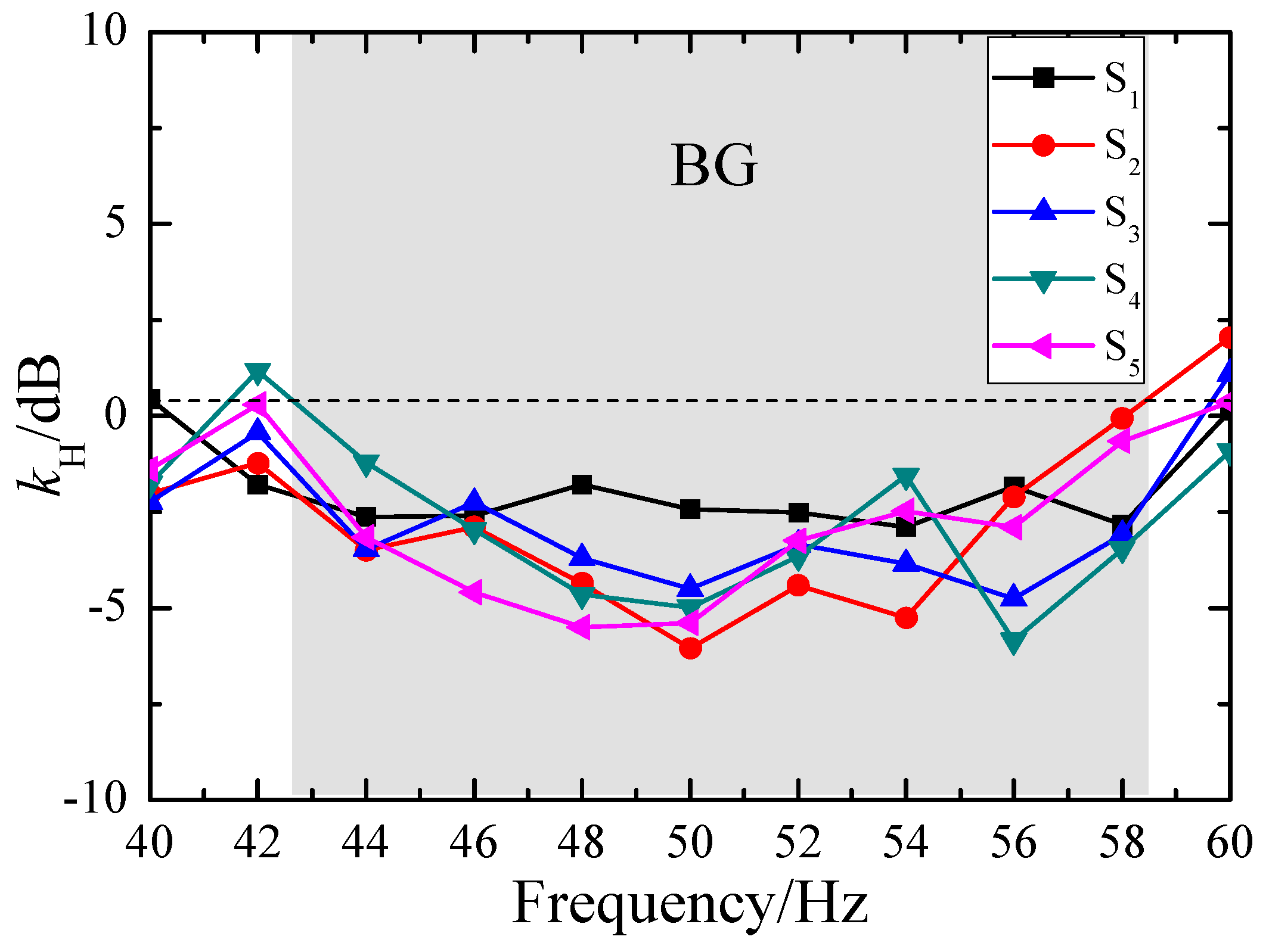
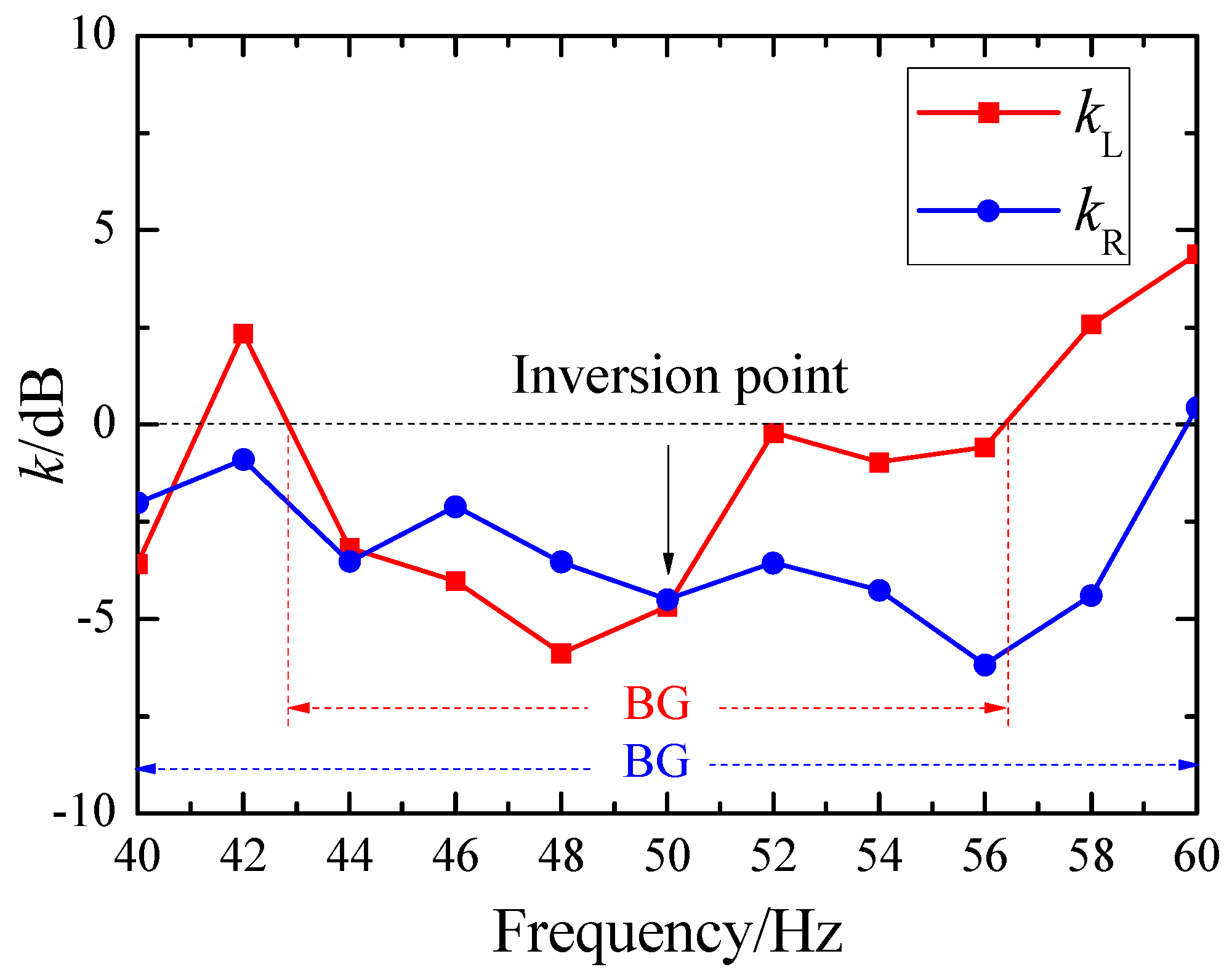
Disclaimer/Publisher’s Note: The statements, opinions and data contained in all publications are solely those of the individual author(s) and contributor(s) and not of MDPI and/or the editor(s). MDPI and/or the editor(s) disclaim responsibility for any injury to people or property resulting from any ideas, methods, instructions or products referred to in the content. |
© 2025 by the authors. Licensee MDPI, Basel, Switzerland. This article is an open access article distributed under the terms and conditions of the Creative Commons Attribution (CC BY) license (https://creativecommons.org/licenses/by/4.0/).
Share and Cite
Zhang, X.; Liu, W.; Shi, Q. Field Experiments on a Square-Hole-Type Metamaterial: Exploring the Attenuation of Rayleigh and Love Waves. Symmetry 2025, 17, 339. https://doi.org/10.3390/sym17030339
Zhang X, Liu W, Shi Q. Field Experiments on a Square-Hole-Type Metamaterial: Exploring the Attenuation of Rayleigh and Love Waves. Symmetry. 2025; 17(3):339. https://doi.org/10.3390/sym17030339
Chicago/Turabian StyleZhang, Xinchao, Wei Liu, and Qingfan Shi. 2025. "Field Experiments on a Square-Hole-Type Metamaterial: Exploring the Attenuation of Rayleigh and Love Waves" Symmetry 17, no. 3: 339. https://doi.org/10.3390/sym17030339
APA StyleZhang, X., Liu, W., & Shi, Q. (2025). Field Experiments on a Square-Hole-Type Metamaterial: Exploring the Attenuation of Rayleigh and Love Waves. Symmetry, 17(3), 339. https://doi.org/10.3390/sym17030339





